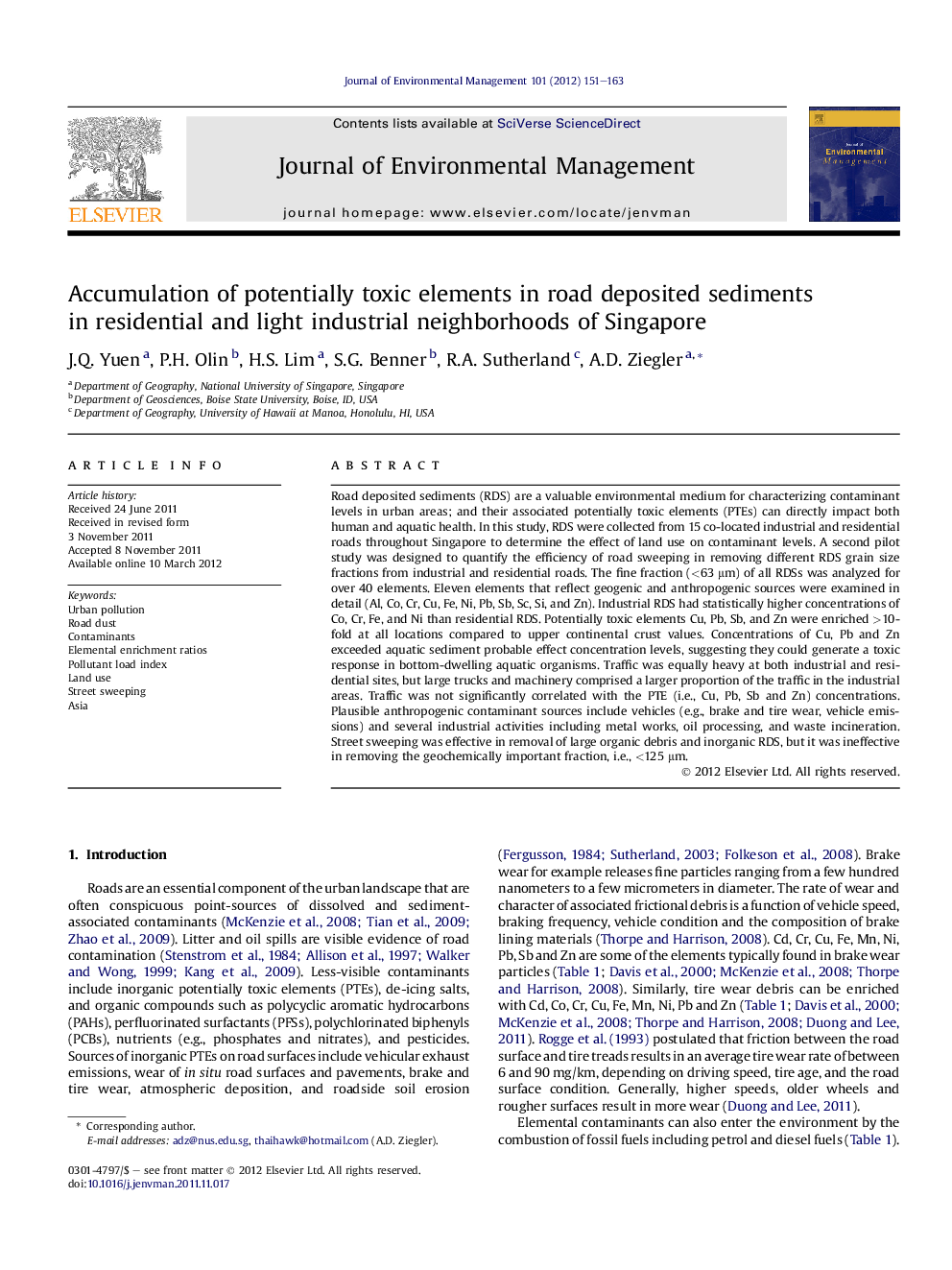| کد مقاله | کد نشریه | سال انتشار | مقاله انگلیسی | نسخه تمام متن |
|---|---|---|---|---|
| 1056847 | 1485311 | 2012 | 13 صفحه PDF | دانلود رایگان |

Road deposited sediments (RDS) are a valuable environmental medium for characterizing contaminant levels in urban areas; and their associated potentially toxic elements (PTEs) can directly impact both human and aquatic health. In this study, RDS were collected from 15 co-located industrial and residential roads throughout Singapore to determine the effect of land use on contaminant levels. A second pilot study was designed to quantify the efficiency of road sweeping in removing different RDS grain size fractions from industrial and residential roads. The fine fraction (<63 μm) of all RDSs was analyzed for over 40 elements. Eleven elements that reflect geogenic and anthropogenic sources were examined in detail (Al, Co, Cr, Cu, Fe, Ni, Pb, Sb, Sc, Si, and Zn). Industrial RDS had statistically higher concentrations of Co, Cr, Fe, and Ni than residential RDS. Potentially toxic elements Cu, Pb, Sb, and Zn were enriched >10-fold at all locations compared to upper continental crust values. Concentrations of Cu, Pb and Zn exceeded aquatic sediment probable effect concentration levels, suggesting they could generate a toxic response in bottom-dwelling aquatic organisms. Traffic was equally heavy at both industrial and residential sites, but large trucks and machinery comprised a larger proportion of the traffic in the industrial areas. Traffic was not significantly correlated with the PTE (i.e., Cu, Pb, Sb and Zn) concentrations. Plausible anthropogenic contaminant sources include vehicles (e.g., brake and tire wear, vehicle emissions) and several industrial activities including metal works, oil processing, and waste incineration. Street sweeping was effective in removal of large organic debris and inorganic RDS, but it was ineffective in removing the geochemically important fraction, i.e., <125 μm.
► Co, Cr, Fe, and Ni were higher in industrial than residential RDS.
► Cu, Pb, Sb, and Zn of anthropogenic origins were not statistically different in residential and industrial RDS.
► Cu, Pb and Zn were found in levels which could generate a toxicity response in aquatic organisms.
► While heavy vehicles were more common on industrial roads, there was no significant relationship between vehicular types and elemental concentrations.
Journal: Journal of Environmental Management - Volume 101, 30 June 2012, Pages 151–163